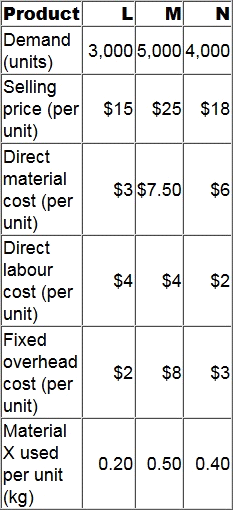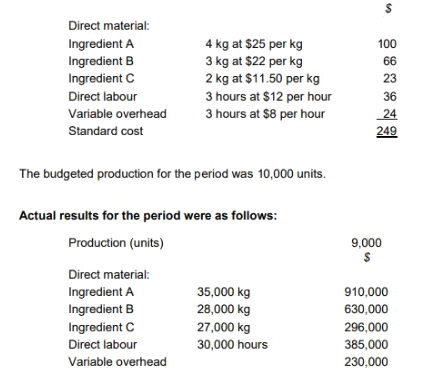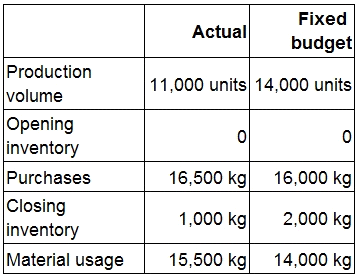CIMA P1 Management Accounting CIMAPRO19-P01-1 Exam Practice Test
Which one of the following would NOT be included in a decision to close a division of an organization?
Answer : A
FG Enterprises manufactures and sells three products. There are 4,400 kg of Material X available in the next period. Material X is used in the manufacture of all three products. The following data is available for the next period.

What is the optimal production plan for the next period in order to maximise profit?
Answer : B
The simplex method has been used to determine the optimum output of products P, Q, R and S with constraints on resources J, K and L.
In the final simplex tableau, the figure in the product R row and the column for slack variable K is 80.
Which of the following statements is correct?
Answer : B
TP makes wedding cakes that are sold to specialist retail outlets which decorate the cakes according to the customers' specific requirements. The standard cost per unit of its most popular cake is as follows:

The general market prices at the time of purchase for Ingredient A and Ingredient B were $23 per kg and $20 per kg respectively.
TP operates a JIT purchasing system for ingredients and a JIT production system; therefore, there was no inventory during the period.
Prepare a statement which reconciles the flexed budget material cost and the actual material cost. Your statement should include the material price planning variances, and the operational variances including material price, material mix and material yield.
What was the material price planning variance for ingredient A?
Answer : B
A company's product has the following standard selling price, variable costs and contribution:

Budgeted sales and production was 20,000 units and actual was 19,500 units.
Due to a market downturn the production and sales budget should have been 10% lower.
What is the operational sales volume contribution variance?
Answer : B
XY manufactures a range of products and uses an activity based costing system.
Budgeted production of Product B is 7,500 units.
Overheads have been identified by activity and related to appropriate cost drivers.
Product B is produced in batches of 250 units. Machines have to be reset after every batch and quality inspections are carried out on every third batch.

What is the total overhead cost per unit of Product B?
Give your answer to two decimal places.
See Below Explanation:
Answer : A
A small manufacturing company makes a single product. Direct labour costs and factory rent account for 80% and 15% of total cost respectively. Activity levels have not varied by more than 5% for a number of years and there is no evidence of operational inefficiency.
Which of the following is the most appropriate approach to budgeting for this company?
Answer : A